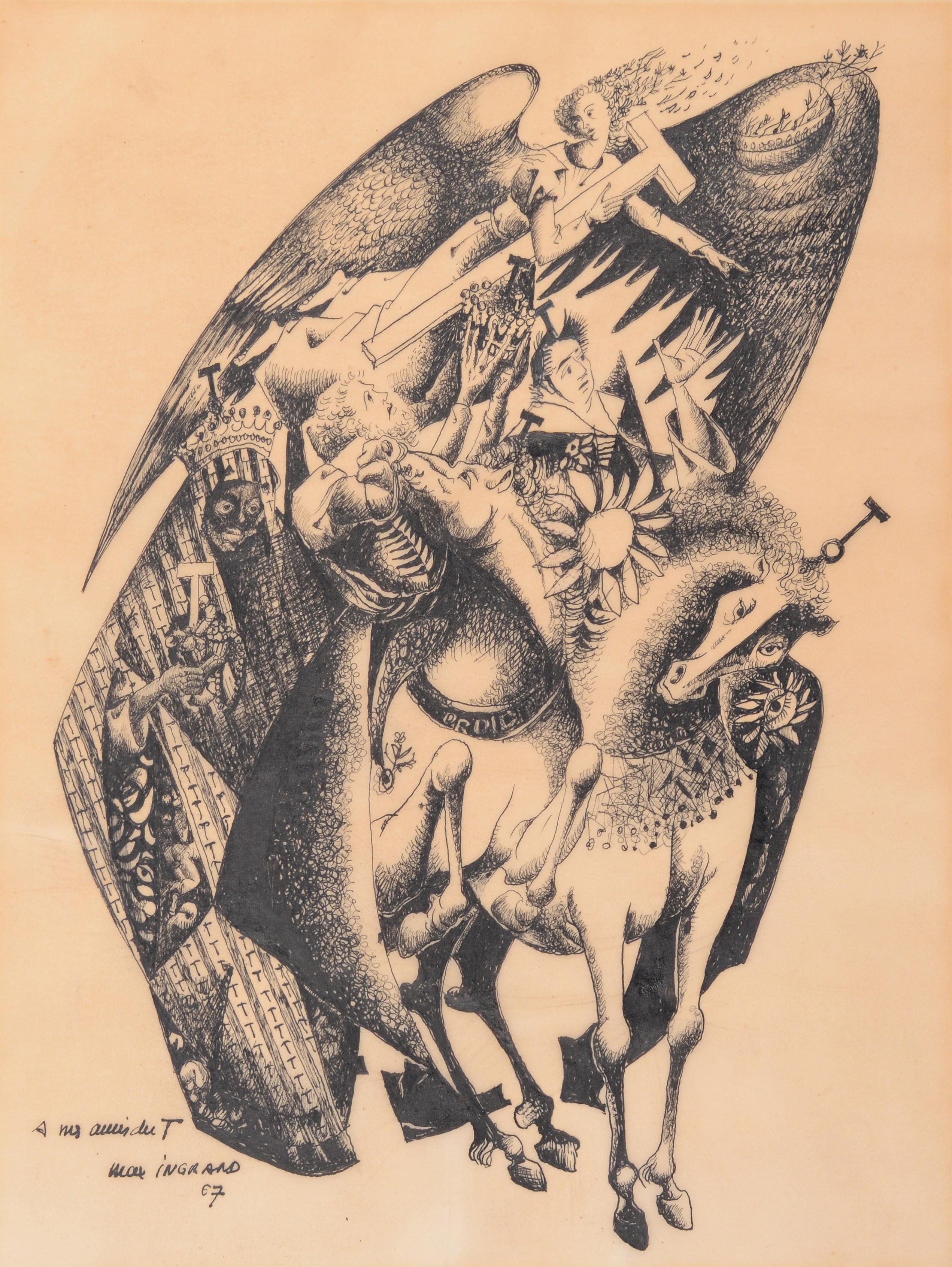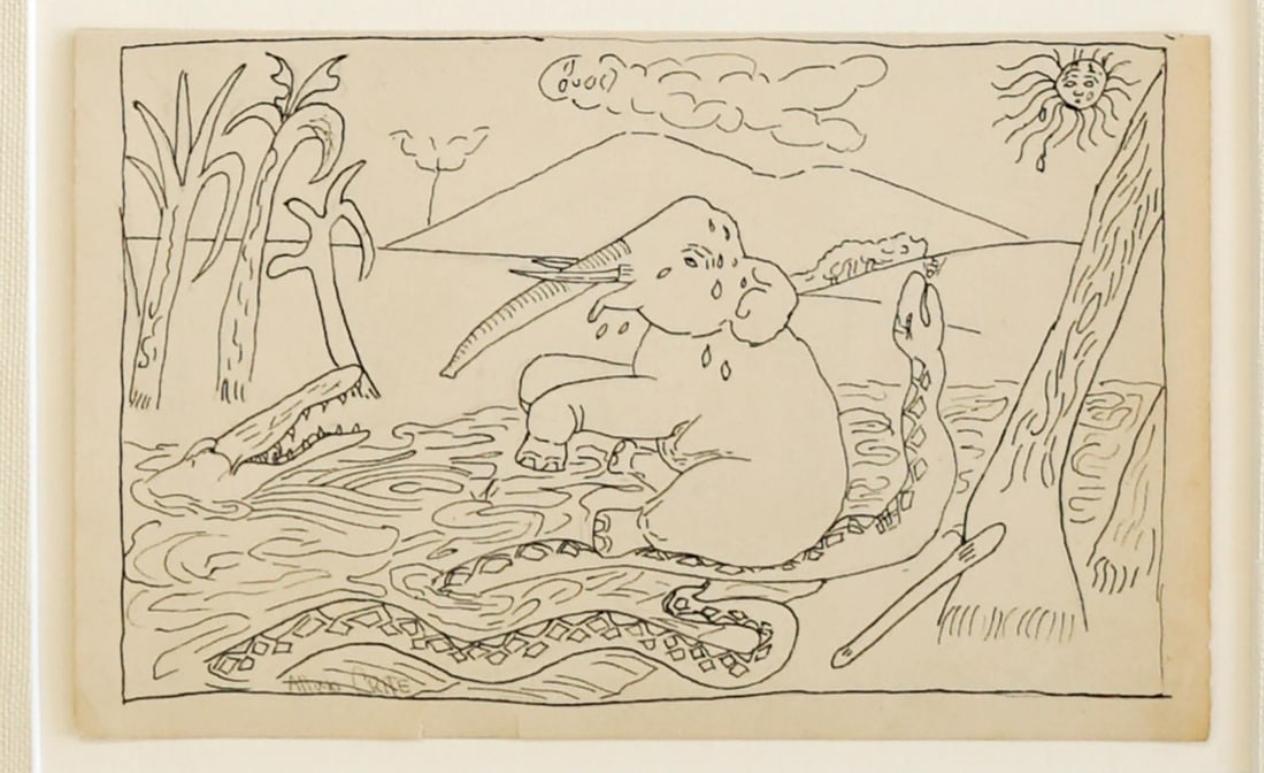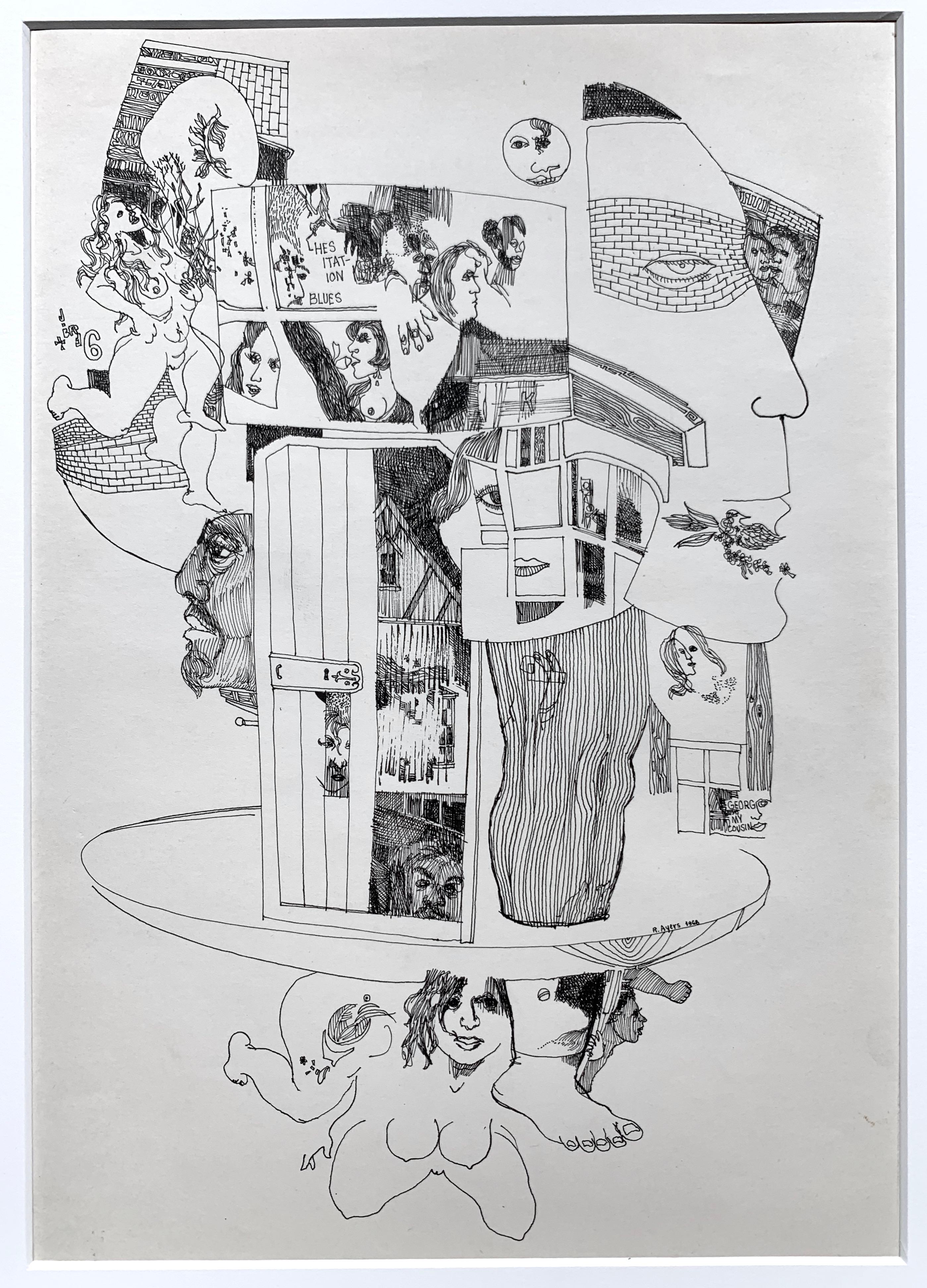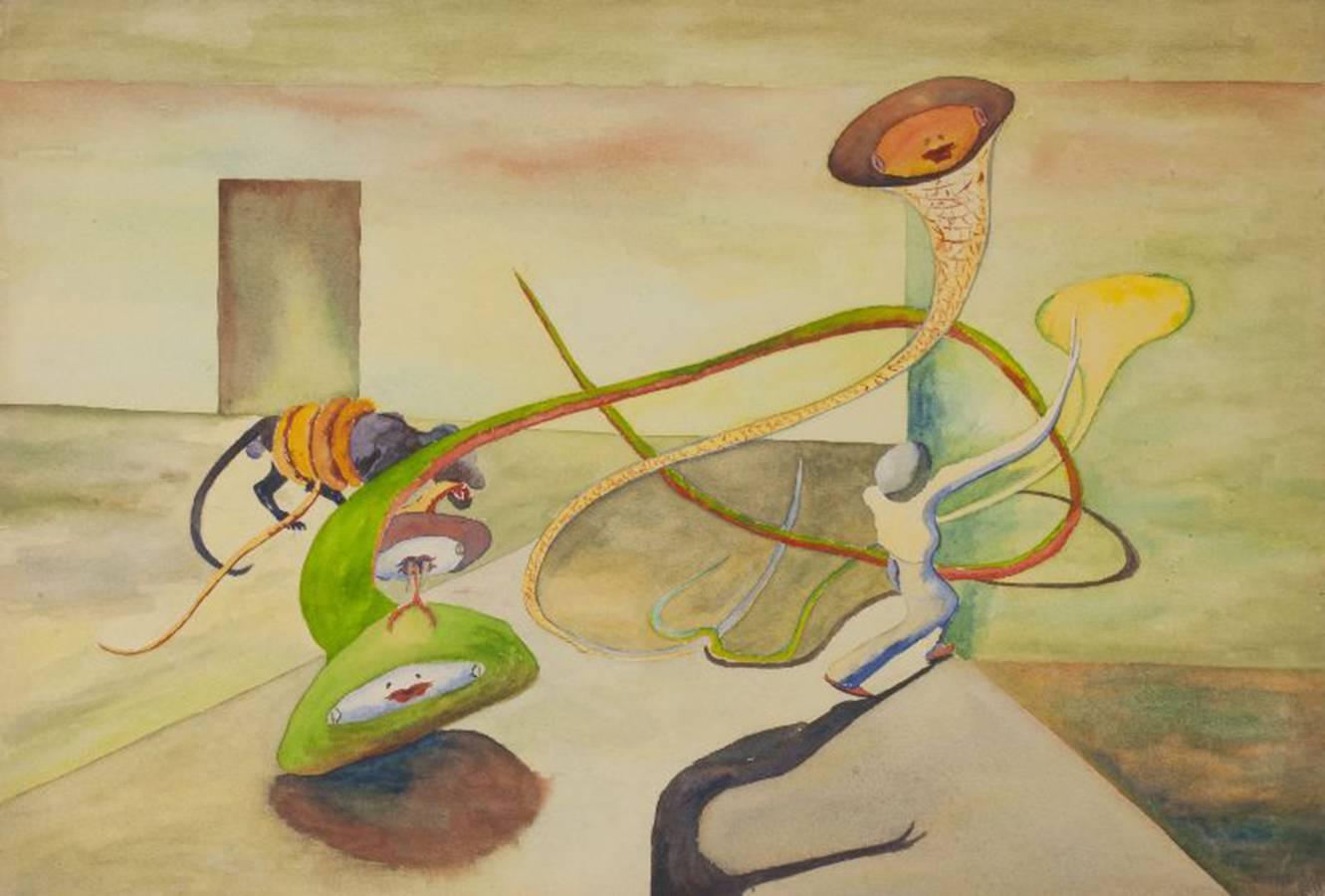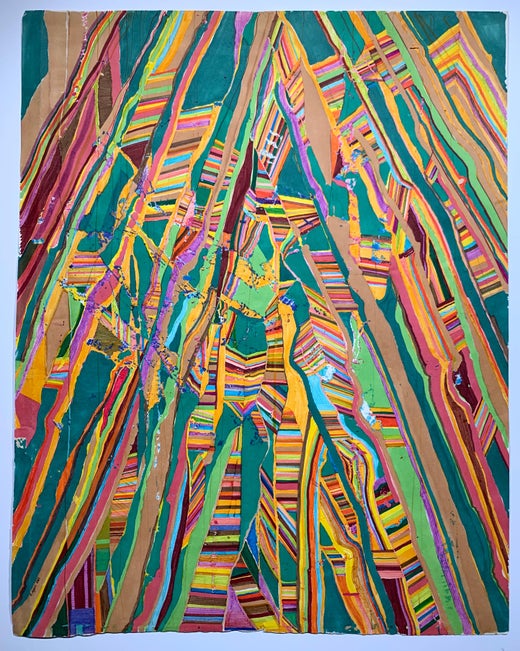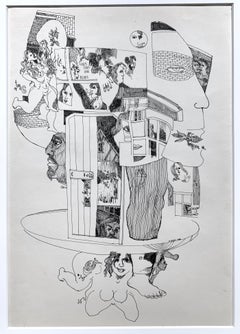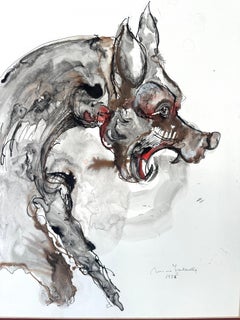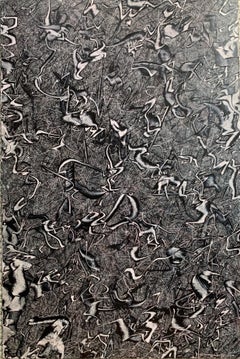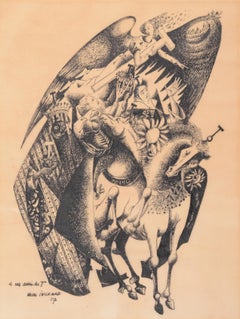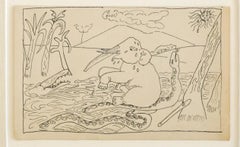Roland AyersAnimal Capers (Black Surrealist Artist)1969
1969
About the Item
- Creator:Roland Ayers (1932 - 2014, American)
- Creation Year:1969
- Dimensions:Height: 20 in (50.8 cm)Width: 20 in (50.8 cm)Depth: 0.1 in (2.54 mm)
- Medium:
- Movement & Style:
- Period:
- Condition:
- Gallery Location:Wilton Manors, FL
- Reference Number:1stDibs: LU245214452902
Roland Ayers
Roland Ayers was born on July 2, 1932, the only child of Alice and Lorenzo Ayers and grew up in the Germantown district of Philadelphia. Ayers served in the US Army (stationed in Germany) before studying at the Philadelphia College of Art (currently University of the Arts). He graduated with a BFA in art education, 1954. He traveled Europe, 1966–67, spending time in Amsterdam and Greece in particular. During this period, he drifted away from painting to focus on linear figurative drawings of a surreal nature. His return home inaugurated the artist’s most prolific and inspired period (1968–1975). Shortly before his second major trip abroad in 1971–72 to West Africa, Ayers began to focus on African themes and African American figures populated his work almost exclusively. Despite Ayers’ travel and exploration of the world, he gravitated back to his beloved Germantown, a place he endowed with mythological qualities in his work and literature. His autobiographical writing focuses on the importance of place during his childhood. Ayers’ journals meticulously document the ethnic and cultural make-up of Germantown and tell a compelling story of class marginalization that brought together poor families despite racial differences. The distinctive look and design of Germantown inform Ayers’ visual vocabulary. It is a setting with distinctive Gothic Revival architecture and haunting natural beauty. These characteristics are translated and recur in the artist’s imagery. During his childhood, one of the only books in the Ayers household was an illustrated Bible. The images within had a profound effect on the themes and subjects that would appear in his adult work. Figures in Ayers’ drawing often seem trapped in a narrative of loss and redemption. Powerful women loom large in the drawings, they suggest the female role models his journal record in early life. The drawings can sometimes convey a strong sense of conflict and at other times, harmony. Nature and architecture seem to have an antagonistic relationship that is, ironically, symbiotic. A critical turning point in the artist’s career came in 1971, when he was included in the extremely controversial Whitney Museum show, Contemporary Black Artists in America. The exhibition gave Ayers an international audience and served as a calling card for introductions he would soon make in Europe. Ayers is a particularly compelling figure in a period when black artists struggled with the idea of authenticity. A question often asked was “Is your work too black or not black enough?” Abstractionists were considered by some peers to be sell-outs, frauds or worse. Figurative work was accused of being either sentimental or politically radical depending on the critical source. Ayers made the choice early on to be a figurative artist but considered his work devoid of political content. Organizations such as Chicago’s Afri-Cobra in the late 1960s asserted that the only true black art of any relevance must depict the black man and woman. A martial agenda of this nature trivialized the work in Ayers’ view. A devotee of Eastern religions, Ayers sought to explore deeper subjects of a less topical nature, thereby stepping outside political discourse. This is not to suggest that he was a man who rejected the physical world. He was profoundly interested in awareness of the environment and how it relates to self-awareness. He often spoke of universality and timelessness as qualities to strive for in his art. Roland Ayers, In His Own Words, ”A person who refuses or is unable to give in to the consensus of his or her society may retain the capacity to see the world in a vastly different way. That person, in addition to having his or her construct of the world — and we all have that — usually has also retained the capacity to be more aware of that unique way of seeing as well as to use it."
- ShippingRetrieving quote...Shipping from: Wilton Manors, FL
- Return Policy
More From This Seller
View All1960s Surrealist Abstract Drawings and Watercolors
Ink, Archival Paper
1980s Surrealist Animal Paintings
Ink, Watercolor, Illustration Board
21st Century and Contemporary Surrealist Abstract Paintings
Watercolor
1970s Abstract Expressionist Abstract Paintings
Masonite, Oil
1970s Surrealist Abstract Paintings
Mixed Media
Mid-20th Century Abstract Expressionist Abstract Drawings and Watercolors
Paper, Ink
You May Also Like
1960s Surrealist Animal Drawings and Watercolors
Ink, Vellum
1930s Surrealist Animal Drawings and Watercolors
Paper, Ink
Late 20th Century Surrealist Landscape Drawings and Watercolors
Watercolor
Early 2000s Abstract Drawings and Watercolors
Ink
Late 20th Century Folk Art Animal Drawings and Watercolors
Color Pencil
20th Century Surrealist Figurative Prints
Watercolor, Etching, Aquatint
